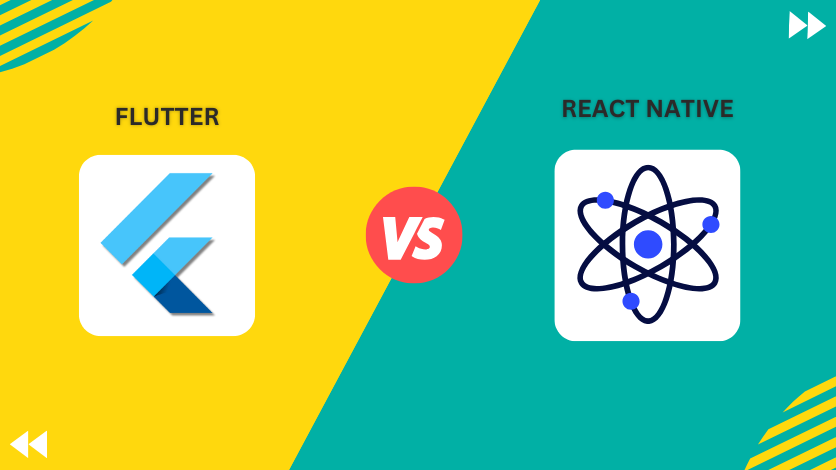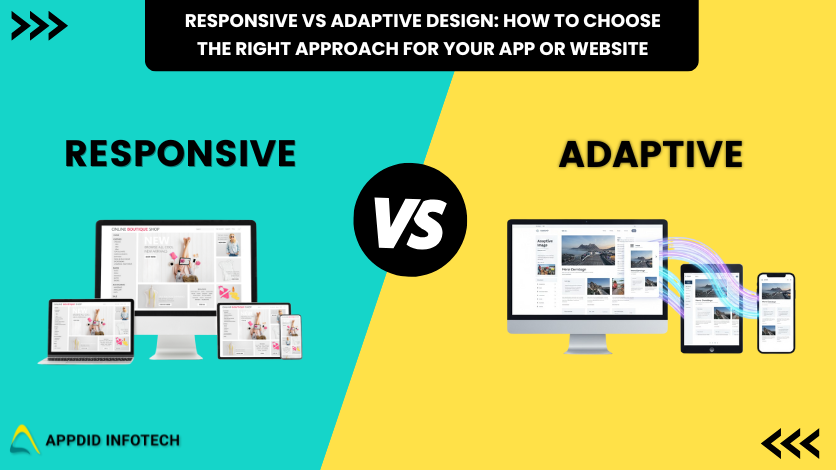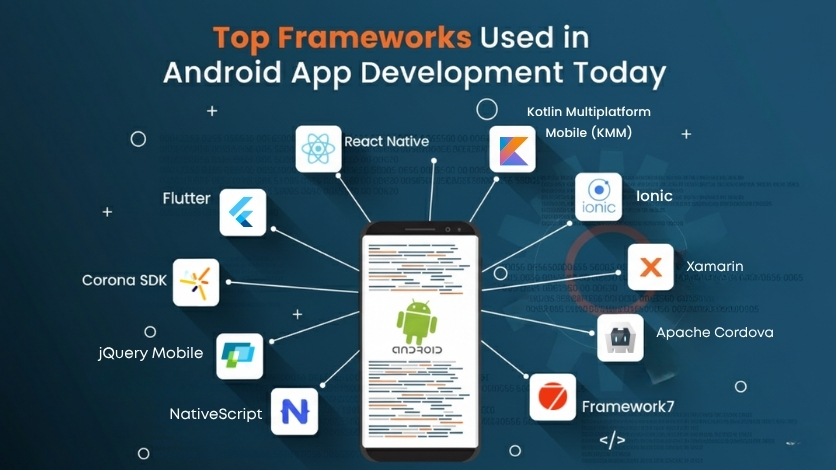Mobile app development continues to evolve at a rapid pace, and with the increasing demand for cross-platform apps, frameworks like Flutter vs. React Native have risen to prominence. Whether you are a developer deciding on a framework or a business owner evaluating options for your app, the choice between Flutter vs. React Native is crucial.
In this blog, we’ll examine the key differences between Flutter and React Native as we look toward 2025, highlighting their advantages, challenges, and the factors you should consider when choosing the best framework for your mobile app development project.
What is Flutter?
Flutter is an open-source UI toolkit developed by Google that enables developers to create natively compiled applications for mobile, web, and desktop from a single codebase. It uses the Dart programming language, which makes it distinct from other frameworks. Flutter’s design philosophy is centered around high performance, rich visual design, and easy-to-maintain code.
What is React Native?
React Native, created by Facebook, is a framework that allows developers to build cross-platform mobile apps using JavaScript and React. It compiles down to native code, allowing developers to build native mobile apps for both iOS and Android with a shared codebase. React Native offers an extensive collection of third-party libraries, which significantly speeds up the development process.
Comparing Flutter and React Native: Performance, Speed, and More
1. Performance
One of the most critical factors to consider when choosing a framework is the performance of the app.
• Flutter: Flutter provides superior performance due to its architecture, as it directly compiles to native ARM code. This eliminates the need for a JavaScript bridge and results in smoother, faster, and more efficient performance. This is especially beneficial for apps that require complex animations, graphics-heavy interfaces, or highly interactive designs.
• React Native: React Native uses a bridge to communicate with native components. While this allows for high performance, it can sometimes introduce lag, especially in apps with heavy processing requirements. However, React Native can still deliver excellent performance for most standard applications.
Verdict: If performance and responsiveness are top priorities, especially for feature-rich apps, Flutter is a clear winner. However, React Native is also efficient enough for a wide range of apps and offers good optimization capabilities.
2. Development Speed and Learning Curve
Time-to-market and developer productivity are crucial for businesses that want to deliver apps quickly.
• Flutter: Flutter offers hot reload and a wide range of customizable widgets, enabling faster development cycles. However, developers need to learn Dart, a programming language that, while not as widely known as JavaScript, is easy to pick up. Once learned, Dart allows developers to build robust applications efficiently.
• React Native: React Native benefits from using JavaScript, one of the most widely known and used programming languages. This makes it easier for developers familiar with JavaScript to jump straight into app development. The hot reload feature is also supported in React Native, which boosts productivity. Moreover, React Native’s large community and extensive resources further enhance its development speed.
Verdict: React Native has the advantage here, especially for teams already experienced with JavaScript. However, Flutter is a strong choice for teams that don’t mind investing in learning Dart.
3. Cross-Platform Support
Both frameworks promise cross-platform development, but the extent and ease of achieving this can vary.
• Flutter: Flutter was built with cross-platform support in mind from day one. It allows you to target iOS, Android, web, and desktop platforms (macOS, Windows, and Linux) from a single codebase. This makes Flutter a perfect choice for companies that want to develop apps across multiple platforms, including mobile and desktop.
• React Native: React Native primarily focuses on mobile platforms—iOS and Android. While there are efforts like React Native Web and React Native for Windows/Mac to extend its reach to web and desktop, it requires additional configuration and might not be as seamless as Flutter's cross-platform capabilities.
Verdict: If your goal is to expand to multiple platforms, including desktop and web, Flutter is a more comprehensive solution. For strictly mobile-first apps, React Native is a solid choice.
4. UI/UX Design Flexibility
User interface and experience are at the heart of a successful app. Here’s how the two frameworks fare in terms of design flexibility:
• Flutter: Flutter is known for its ability to create visually rich UIs with a high level of customization. It comes with a wide variety of widgets and tools, including both Material Design (Google) and Cupertino (Apple) styles, making it easier to implement custom UIs that look great on both Android and iOS platforms. This level of customization ensures that developers can fine-tune the design to meet specific branding requirements.
• React Native: React Native uses native components, which results in apps that look and feel like native iOS and Android apps. The advantage here is that the user experience is more familiar and in line with the platform’s design guidelines. However, React Native is somewhat less customizable than Flutter in terms of UI components, which can limit creative freedom for highly customized designs.
Verdict: If you prioritize customized designs and flexibility in UI/UX, Flutter is the superior choice. React Native offers a more native feel but might lack the deep customization options available in Flutter.
5. Community and Ecosystem
An active community and a rich ecosystem of libraries and tools are essential for successful app development.
• Flutter: Flutter’s community is growing rapidly and supported by Google. While the ecosystem is expanding with plugins and tools, it still lags behind React Native in terms of mature community-driven libraries.
• React Native: React Native benefits from being around for a longer time, leading to a larger, more established community. This means more readily available resources, third-party libraries, and plugins that developers can use to accelerate development.
Verdict: React Native has the advantage in terms of community support and ecosystem maturity, given its longer presence in the market. However, Flutter is catching up fast, and its active community continues to expand.
FAQs: Flutter vs. React Native
Q1: Which framework is better for building a highly interactive app?
For highly interactive apps that require complex animations and smooth transitions, Flutter is the better option due to its superior performance and highly customizable widgets.
Q2: Which framework offers better long-term support?
Both frameworks are backed by major companies (Google for Flutter and Meta for React Native), so both are likely to receive long-term support. React Native may have a slight edge due to its longer market presence, but Flutter is gaining traction quickly.
Q3: Can I build apps for the web with both Flutter and React Native?
While Flutter supports web development natively, React Native requires additional libraries and configuration to achieve web compatibility, making Flutter the easier option for web apps.
Q4: Can I use native code with both frameworks?
Yes, both Flutter and React Native allow you to write native code if you need platform-specific functionality that’s not available through the framework’s standard libraries.
Q5: Which framework is better for a startup?
For startups with small teams or limited resources, React Native might be a better option due to its larger community and faster development time, especially if the team already has JavaScript experience. Flutter can be a good choice if you’re aiming for highly customized UIs or multi-platform reach.
Conclusion: Which Framework to Choose in 2025?
The choice between Flutter and React Native largely depends on your project goals and specific needs. Here’s a quick summary:
-
Choose Flutter if you require high performance, advanced customization, and want to target multiple platforms (mobile, web, and desktop) from a single codebase.
-
Choose React Native if you prefer a JavaScript-based solution with extensive third-party libraries and are focused primarily on mobile-first applications with a familiar, native user experience.
If you’re looking to build a cutting-edge mobile app with the best technology for 2025, Appdid Infotech is here to help. Our team of experts specializes in cross-platform app development, delivering high-quality, scalable mobile apps that exceed expectations. Whether you're looking to build an interactive app or expand your reach across platforms, we have the expertise and experience to make it happen.
Get in touch with us at Appdid Infotech today and let us help you take your mobile app to the next level.










